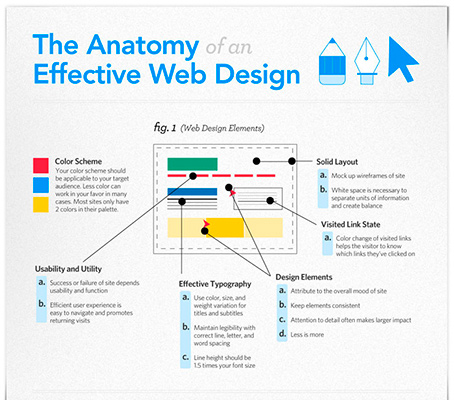Fascinated In Learning How Website Layout Has Changed Over The Years? Discover The Development From Standard, Simple Styles To User-Centered Strategies That Prioritize The Demands And Choices Of On The Internet Site Visitors
Fascinated In Learning How Website Layout Has Changed Over The Years? Discover The Development From Standard, Simple Styles To User-Centered Strategies That Prioritize The Demands And Choices Of On The Internet Site Visitors
Blog Article
Content Author-Johansen Cantu
In the past, websites were straightforward and focused on info. Navigation was direct, and layout was for desktop computers. Currently, individual experience is key. Information guides styles for easy navigation. Responsive designs fit different tools. Today, dark mode minimizes pressure, and minimal menus enhance navigating. Interactive functions involve users, and bold visuals stand apart. AI combination enhances engagement. See how style has actually advanced to improve your on the internet journey.
Very Early Days of Web Design
In the early days of website design, simplicity reigned supreme. Web sites were fundamental, with limited colors, typefaces, and formats. The focus got on giving info as opposed to flashy visuals. types of business websites accessed the internet via slow dial-up connections, so speed and capability were vital.
Navigating menus were straightforward, commonly located on top or side of the page. Web sites were developed for desktop, as mobile surfing had not been yet common. Content was king, and designers focused on easy readability over complicated design components.
HTML was the key coding language made use of, and designers needed to work within its constraints. Computer animations and interactive features were minimal contrasted to today's requirements. Web sites were static, with little vibrant web content or individualized individual experiences.
Rise of User-Focused Style
With the advancement of website style, a shift in the direction of user-focused style concepts has become significantly noticeable. Today, developing internet sites that prioritize customer experience is essential for involving site visitors and accomplishing business objectives. User-focused style includes understanding the needs, choices, and behaviors of your target market to tailor the web site's layout, content, and features as necessary.
Developers now carry out extensive study, such as individual surveys and use screening, to collect understandings and comments straight from individuals. This data-driven technique assists in producing user-friendly navigation, clear calls-to-action, and visually enticing interfaces that reverberate with site visitors. By placing the user at the center of the design procedure, sites can supply an extra personalized and pleasurable experience.
Responsive design has likewise become an essential element of user-focused layout, making sure that internet sites are maximized for numerous tools and display dimensions. This adaptability enhances accessibility and functionality, accommodating the varied ways individuals interact with web sites today. Basically, the increase of user-focused design represents a shift towards producing electronic experiences that prioritize the needs and expectations of the end user.
Modern Trends in Web Design
Explore the most recent trends forming web design today. One noticeable pattern is dark setting design, providing a streamlined and modern look while decreasing eye pressure in low-light environments. An additional vital fad is minimalist navigation, simplifying menus and enhancing customer experience by concentrating on essential elements. Including micro-interactions, such as animated buttons or scrolling results, can develop a more interesting and interactive website. Receptive layout stays essential, making certain smooth individual experiences throughout different devices. Furthermore, making use of vibrant typography and asymmetrical layouts can include aesthetic interest and accentuate details content.
Integrating AI innovation, like chatbots for consumer support or tailored referrals, improves individual involvement and simplifies processes. Access has additionally end up being a substantial fad, with designers focusing on comprehensive layout methods to accommodate diverse user needs. local seo pricing by maximizing site efficiency for rate and effectiveness is another arising trend in web design. Collaborating with individual feedback and data analytics to iterate and enhance design continually is vital for remaining relevant in the ever-evolving electronic landscape. By accepting these contemporary fads, you can create a visually appealing, easy to use internet site that reverberates with your target market.
Final thought
As you reflect on the development of site style from the very early days to now, you can see just how user-focused style has actually become the driving force behind modern-day fads.
Accept the journey of change and adaptation in website design, always maintaining the user experience at the center.
Remain present with the most up to date patterns and modern technologies, and never ever stop advancing your method to create aesthetically spectacular and easy to use internet sites.
Progress, adjust, and create - the future of web design is in your hands.
